Annual cutting back of the grasses
‘Thank you for holding. Your patience is appreciated.’
I am so relieved no one has been charged for the delight of reading a thrice weekly blog post. Because this is slipping mightily into a snatched once a week missive. If that.
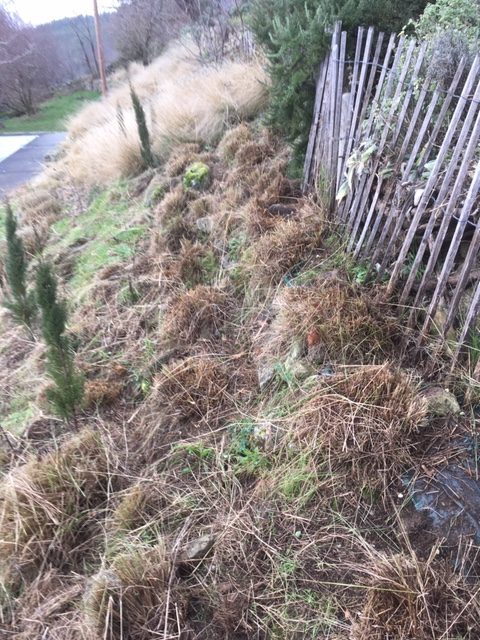
Just this week I was wishing I was doing this landscaping lark when I was twenty years younger. The aches. The exhaustion. The inability in an evening after a day of toil to do more than make dinner, catch up on emails, do a daily crossword, look at the day’s photos. Plot a bit of creative writing and then suddenly find myself staggering off to bed.
Still I get there eventually. Even if it is composed on a train on the way back to London.
And I had to pause there while an official just checked my train ticket. And demanded to see my passport to confirm my date of birth. Really? It’s not a reduced rate for the over 60s variety: a full fare. I’m not that old! I swear this is not the time to be in a post Brexit world. The British passport elicits sarcastic comments. The first of many I assume.
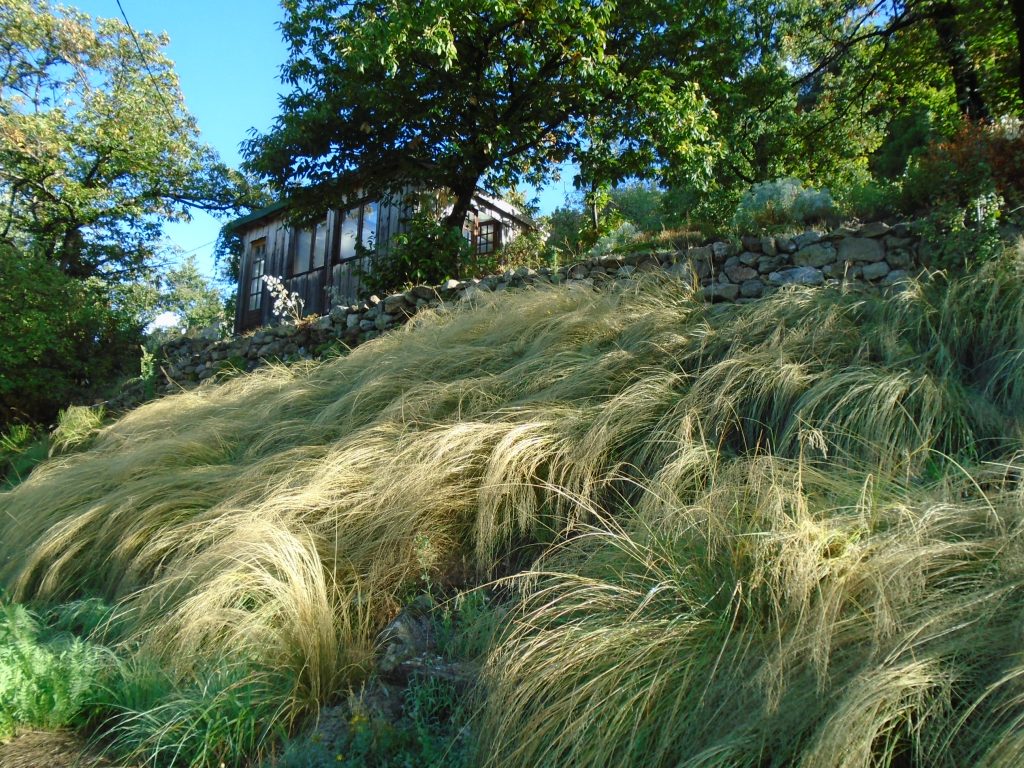
According to the received wisdom, the ornamental grasses of the eragrostis curvula variety require cutting back hard in spring. But I have no time in spring. Who does? That is seed sowing time, prepping the vegetable areas, mulching the asparagus beds and the 17 beds in the potager. And some years – before I launched onto this mad venture to redesign my entire vegetable garden and deal with a major rebuilding project on the house at the same time – I have time in winter to perform this task.
I dared to do this first on the orchard bank as an experiment. Would I kill them? Check their growth a whole season?
The answer is no. They are fine. And it is easier to see the new growth if you have removed last year’s grass. It’s a rather fetching sight to see the bright green among the thatch of yellow.
A quick delve into the archives…
You can’t transplant them until they spring into growth of course, and you have to step over the self-seeded beauties on the steps nearby and resist the urge to uproot and place them where you want them to go. That delight definitely has to wait.
I like to take a week. I almost enjoy it. The lawn bank, the pool bank, the orchard, the duck pond terrace, the oak bank. And a few random grasses that lurk on the terrace bank, the east garden.
The views are marvellous when you are perched high up on a bank looking over at the distant mountains and trying not to give your calves an excuse to go into another cramp from the awkward perch.

If you look at the maintenance of a large garden, you can see that there are some areas that just ‘do’. Shrubs that only require a huge cut back once a year, hedges that require nothing at all, parts you walk past because… ugh, just ugh.
And these wonderful African Love Grass plants have been a miracle solution for me. They just do the trick.
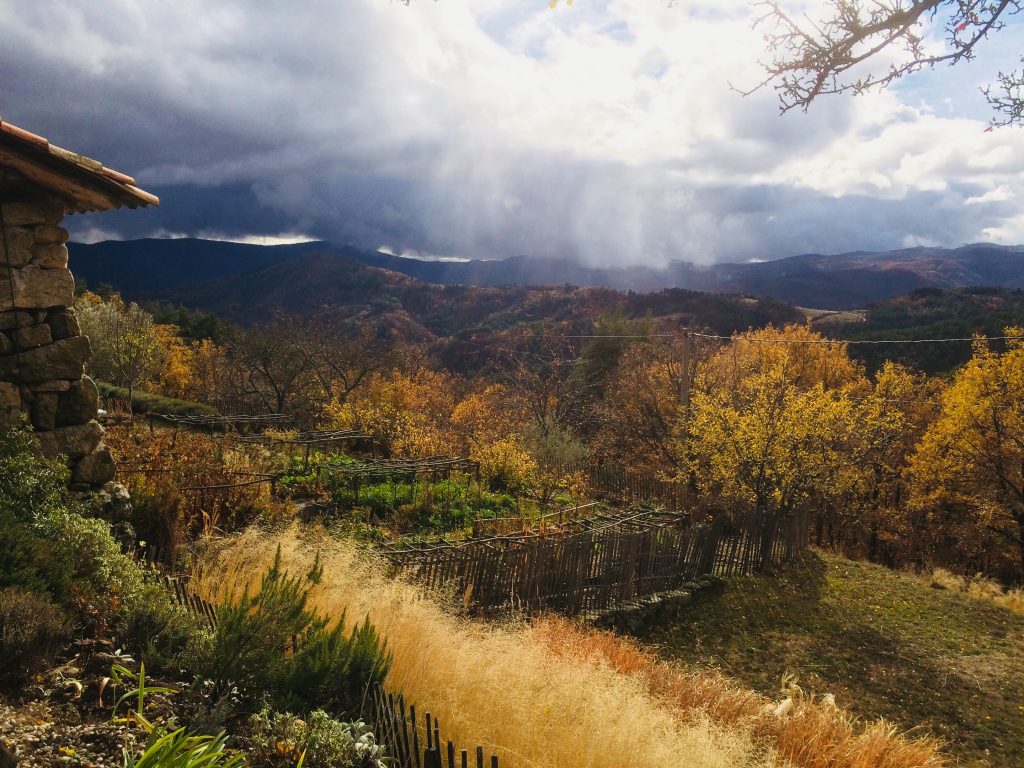
One major cut back in winter or spring, and then I rarely venture on these banks the rest of the year and just leave them alone.
I have been growing cypress trees in among the grasses to break up the monotony. That is work in progress and not for this blog post. And each year I enthusiastically transplant random verbena bonariensis weeds and other delights. Usually to see them expire from the harsh conditions by autumn.
This year’s experiment is achillea Gold Plate. I have removed the huge beast from the potager (way too thuggish) and transplanted bits all over the lawn and pool bank. In the gaps left by grasses or just gaps I have ‘creatively’ invented.
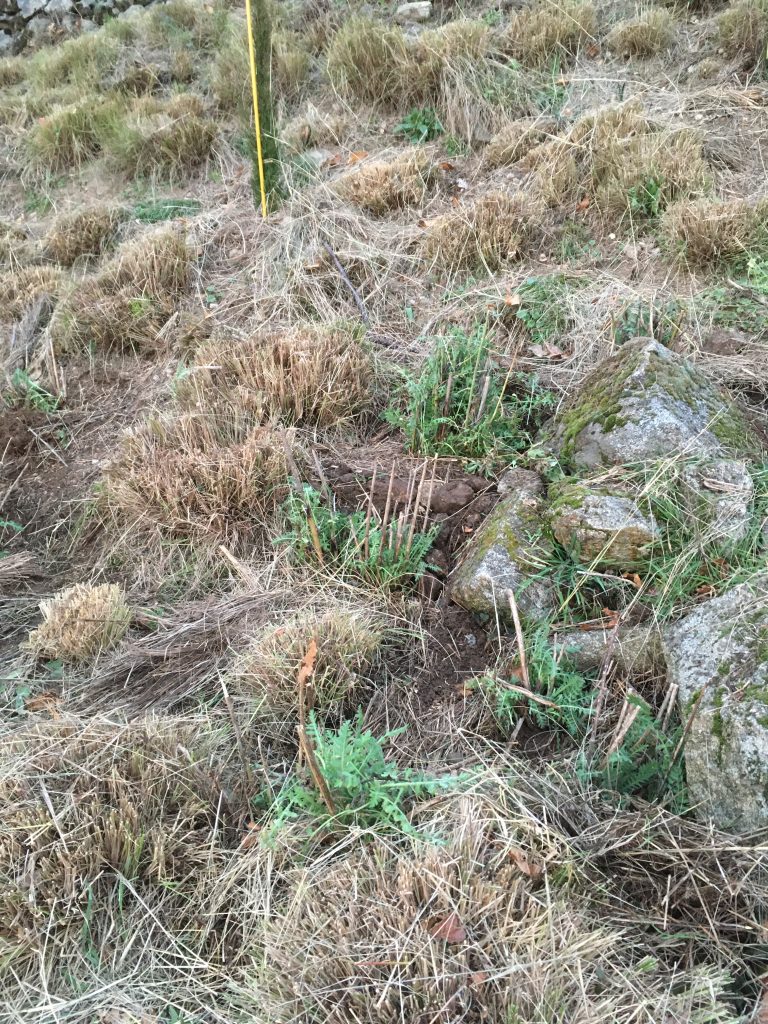
We shall see how they do. If you don’t see any shots of surprising yellow tall flowers poking above the heads of the grasses in summer you will know the experiment was not a success.
And yes the grasses can get scruffy. But the overall effect is one of curious swaying interest and movement and simple drama.
Some lurking weeds underneath this massive grass thicket can sneak in grow unchecked all season. But I get round to them during the one week of maintenance time.
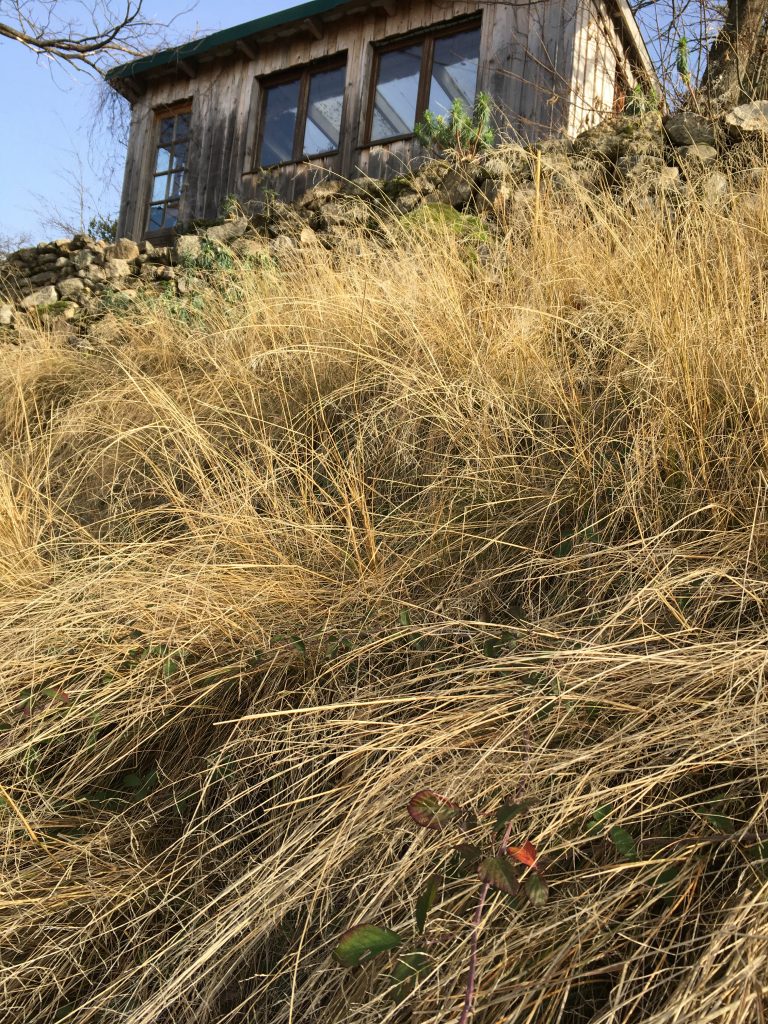
They don’t suffer from this winter cut back. And as long as you don’t shear them to the ground, the overwintering ladybugs and spiders have plenty of cover left to hide.
The only snag with this huge volume of grasses is the method of cutting. I have to use secateurs. It is the only way to achieve a neat cut that saves the wildlife, saves the look of the bank, gets hanks of the dead grass cut and mulched. So it’s up close and very careful work.
And occasionally painful. Interspersed with the grasses on this inhospitable bank – poor soil, no moisture, way too free draining, formerly a bramble forest, is that some traces of the former life of these banks remain.
Brambles sneak in and through the grasses and are the most marvellous trap for daydreamers. You can’t work your way through the work without some serious lacerations. Maybe that is why I go to bed early – antiseptic cream for all the cuts and wrist scratches must be soporific.
I usually wear gauntlets, cut and weed and dig them out as I go. The cut grass goes straight back down onto the bank and the whole thing is a nice closed system. Keeps the weeds down, saves me raking and dragging the detritus down off the bank and put to use.
This year I donned the washing up gloves. That way I could only, and only cut back the grasses and deftly avoid going anywhere near the brambles. I only had one pair of these gloves so no temptation to stray from cutting. Cutting. Cutting.
So if I show you this….

You might wonder why there is a stack of cut grass almost, but not quite, the size of a horse piled up on the lawn.
Three of them.

Answer. Raised beds. Many, many tall raised beds. Just over the fence.
Over the weekend I realized that I didn’t need to have a minor panic attack about what I could find on the farm to fill the huge newly built (in my dreams) raised beds for the permaculture project.
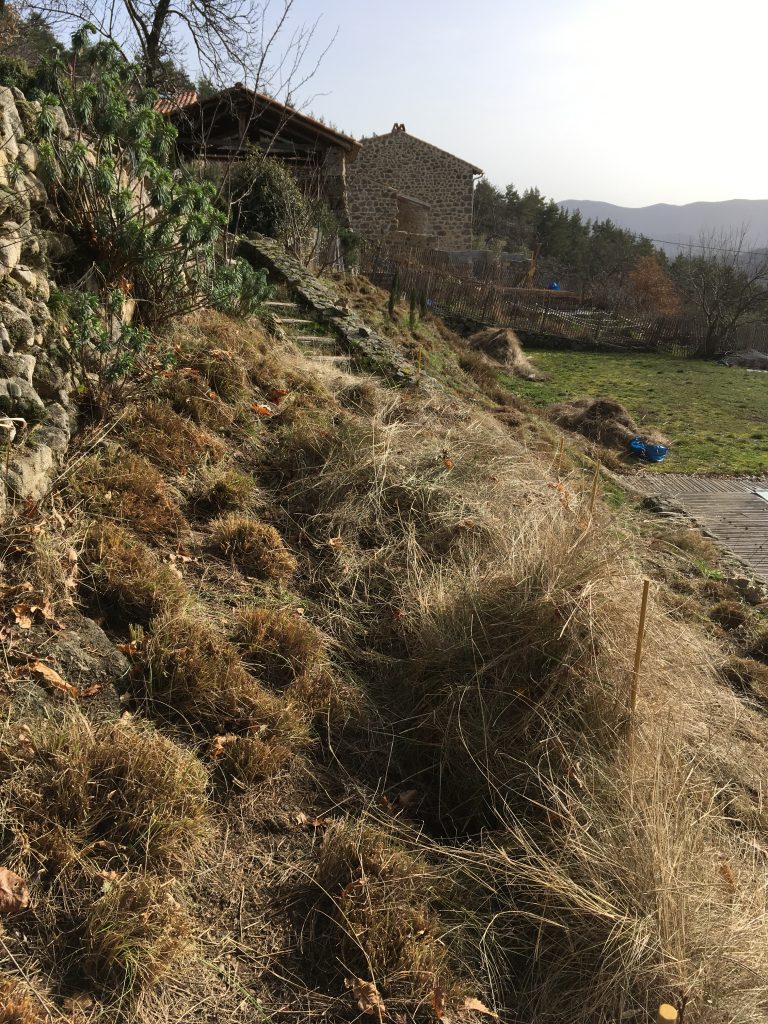
I had raided one entire compost heap and the contents filled just one of the six beds. I knew I had enough for about two more piled up on the edge of the dry garden. But that meant I would be short of material for three more.
There is the ‘there be dragons’ heap over at the far end of the property behind the potting shed. But it was going to be my last resort solution. I have been filling in a steep bank with nasty detritus for a few years now. Trying to build up the bank and turn it into a landscaped project. I really didn’t want to dismantle it for other uses. And I know that it’s hibernating heaven for all manner of critters.
So here was the solution under my secateurs. Cut like mad and do a five days worth of work in three days and supply the potager.
I ran out of time for the orchard, the duck pond terrace bank and the oak bank for more grasses. But if all goes to plan that can be an end of the month job.
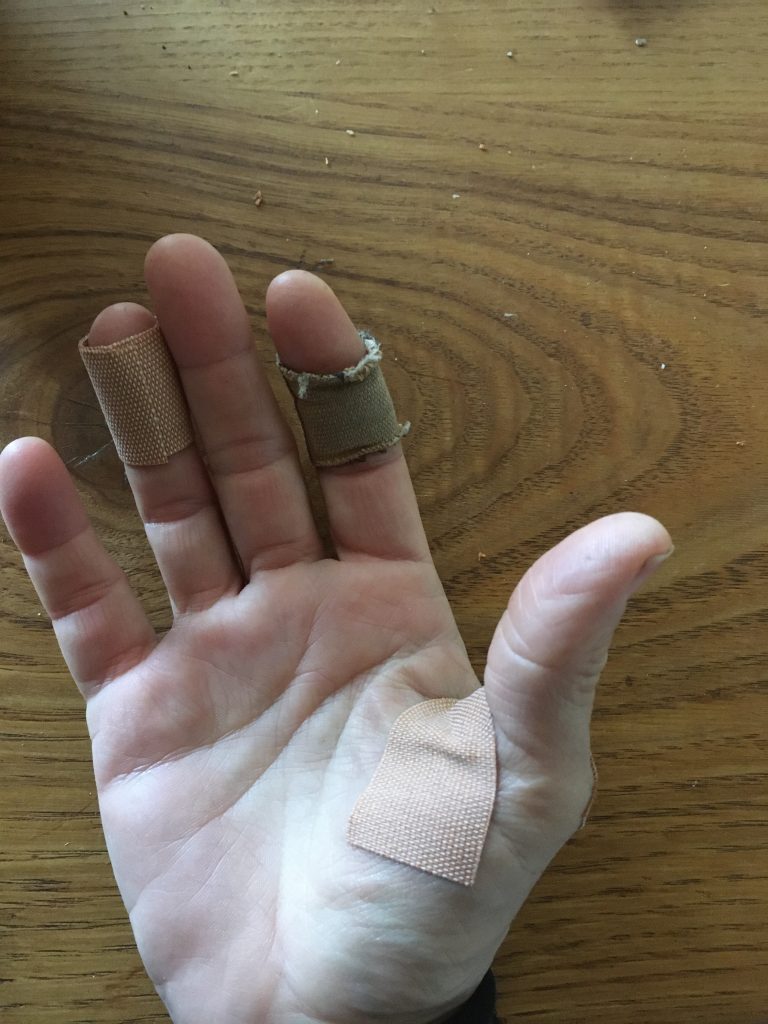
When the blisters have healed. When I can form a fist that isn’t perfectly moulded to my pair of trusty secateurs.
I might even look forward to it.
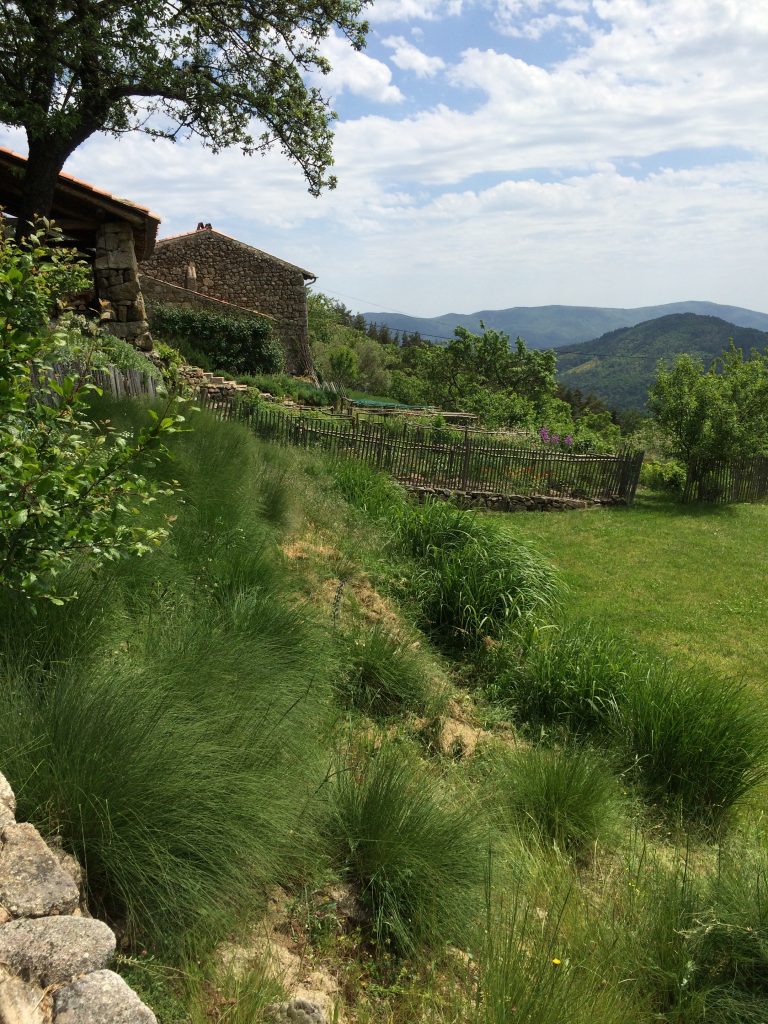
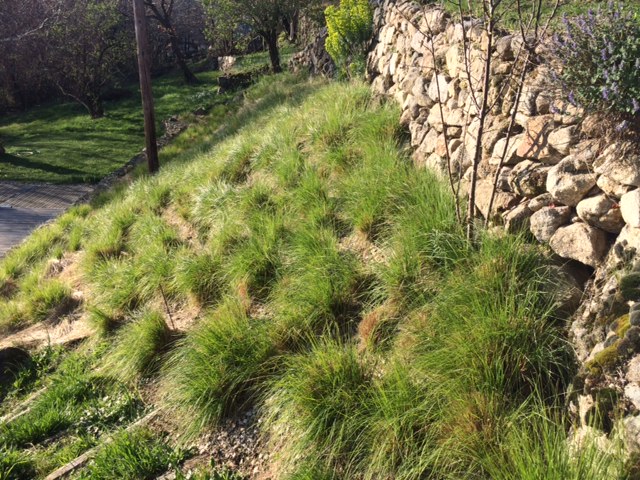
6th February 2020 @ 3:05 pm
I take my hat off to you, and I feel your pain… Your raised beds are huge monsters, I’m not surprised to see how much is needed to fill them. Bon courage, times 6!
Have you thought of using a scythe on your grass banks?
Completely agree about the compromises one needs to make in a large garden. Mine is 5000 m2 and was a field not long ago. The weeds still haven’t got the message about the ‘change of use’. Will they ever?
And looking at the list of the “small” amount of things you are able to do in the evening after a day’s toil in the garden, I see that I’m way behind!!!
6th February 2020 @ 3:37 pm
Hi Christine. Ooh do send us photos of your garden – I love the idea of trying to convince your weeds to have a change of use! You can’t scythe on so steep a slope, alas. It is too dangerous. And the grass is super tough – so it doesn’t take well to the sweeping motion of a scythe while trying not to slice your leg. I have tried streaming (the good old petrol driven scythe which we use everywhere else on a slope), shears, hedge trimmers, you name it… But sometimes you just have to accept that it is just gardening. One week of work for a year’s delight. Almost low maintenance!
6th February 2020 @ 3:38 pm
Sorry – strimming. weed whacking, whipper snipping.